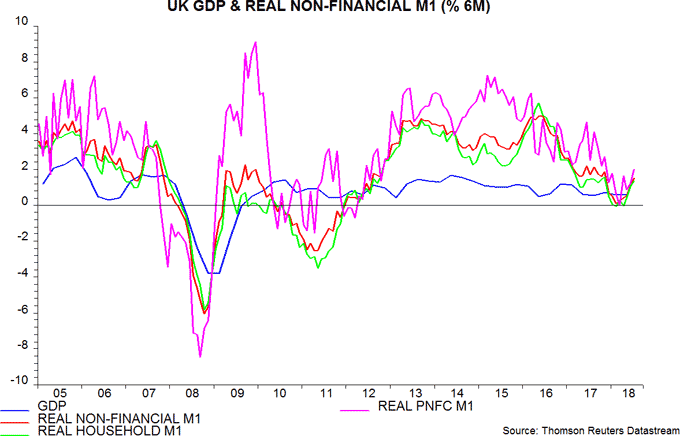UK monetary growth recovered further in July but could fall back in the wake of this month’s rate hike. August data should be awaited before upgrading economic expectations.
Six-month growth of real (i.e. inflation-adjusted) narrow money, as measured by non-financial M1, rose to its highest level since November 2017 in July, though remains below its range over the prior five years (i.e. back to August 2012). Real broad money – non-financial M4 – has also reaccelerated, following significant weakness earlier in 2018 – first chart.
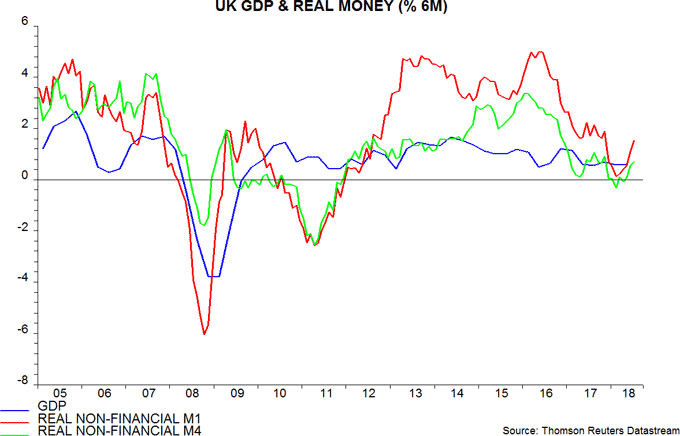
The rise in six-month real narrow money momentum in July contrasts with falls in the US and Euroland. UK growth remains lower than in Euroland but the gap is the smallest since October 2016 – second chart.
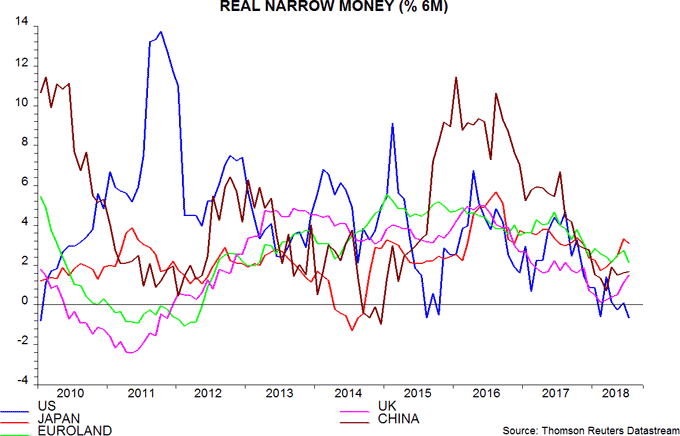
“Local” UK shares – as measured by the FTSE local UK index, which includes companies generating 70% or more of sales from the UK / Europe, the Middle East and Africa – have underperformed other markets significantly in currency-adjusted terms so far in 2018, undershooting even emerging markets – third chart. Improving absolute and relative monetary trends suggest that the case for underweighting UK shares is weakening.
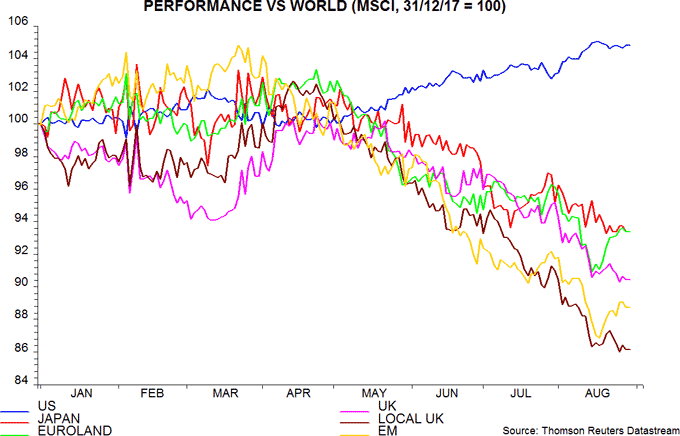
The caveat, of course, is the unfortunate August rate hike, which risks aborting the monetary recovery. Six-month growth of narrow and broad money fell sharply immediately after the November rate increase.
The recovery in real money growth, in addition, has been partly due to a slowdown in six-month consumer price inflation – fourth chart. This could reverse in the wake of recent sterling weakness – the effective exchange rate fell by 2.6% between April and July.
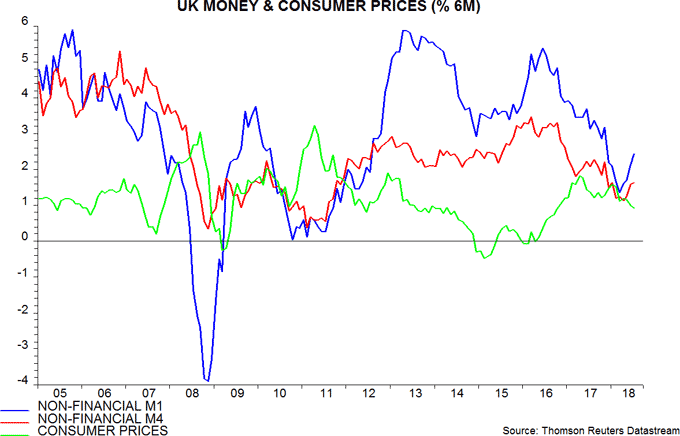
A cautious view of UK economic / market prospects, therefore, will be maintained here, at least pending August monetary data released at end-September.
Sectoral data show that the recent rise in six-month real narrow money growth has reflected increases in both the household sector and private non-financial corporate (PNFC) components – fifth chart. The latter improvement, in particular, is surprising, suggesting that businesses are not yet scaling back expansion plans in response to the supposed increased risk of a “no deal” Brexit.
